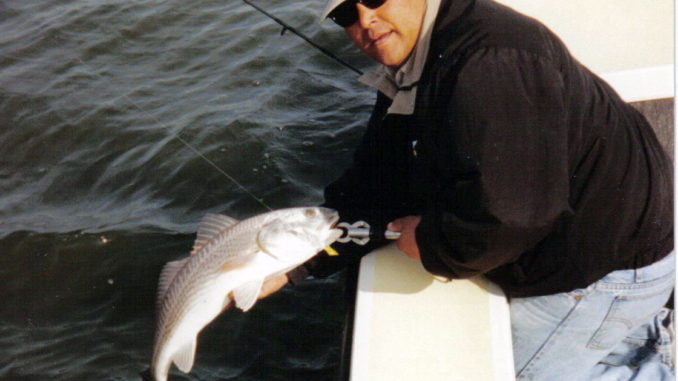
Interior Secretary Gale A. Norton today announced the U.S. Fish and Wildlife Service will distribute more than $523 million in excise taxes paid by America’s recreational shooters, hunters, anglers and boaters, to state fish and wildlife agencies to support fish and wildlife conservation and education programs.
With this distribution, the Nation’s preeminent wildlife management funding mechanisms will mark a major milestone.
“Both the Dingell-Johnson Sport Fish and Pittman-Robertson Wildlife Restoration accounts have passed the $5 billion mark,” said Norton. “That means that since establishment of these crucial programs in 1950 and 1937 respectively, anglers and hunters have paid more than $10 billion for fish and wildlife management. By supporting these excise taxes, sportsmen and women are contributing critical funds for maintaining and restoring our fish and wildlife resources.”
State agencies use the money to support conservation programs such as fish and wildlife monitoring, habitat improvement, acquisition of land for habitat conservation and species protection, research, education, and other programs. The funds also help pay for hunter safety, aquatic education, and fish and wildlife-related recreation projects. The funds are apportioned by formula under the two Federal Assistance programs.
The Wildlife Restoration apportionment for 2006 totals more than $233 million, with nearly $42 million going for hunter education and shooting range programs.
The apportionment for Sport Fish Restoration for 2006 totals more than $290 million.
Wildlife Restoration funds are made available to states based on land area (land plus inland waters, such as lakes and large rivers) and the number of hunting license holders in each state. Distribution of hunter education funds is based on the relative population of each state.
The Service distributes Sport Fish Restoration funds to the states based on the land and water area (land plus inland water, plus the Great Lakes and marine coastal areas) and the number of fishing license holders in each state.
Federal Assistance funds pay for up to 75 percent of the cost of each project while the states contribute at least 25 percent.
Wildlife Restoration is guided by the Pittman-Robertson Wildlife Restoration Act of 1937 and is funded by the collection of excise taxes and import duties on firearms, ammunition, and archery equipment. States use these funds to manage wildlife populations, conduct habitat research, surveys and inventories, and to administer hunter education programs.
Sport Fish Restoration is guided by the Dingell-Johnson Sport Fish Restoration Act of 1950 and is funded by the collection of excise taxes and import duties on sport fishing equipment and tackle, motorboat and small engine fuels and pleasure boats. States use Sport Fish Restoration program funds to stock fish; acquire and improve sport fish habitat; provide aquatic resource education opportunities; conduct fisheries research; and construct boat ramps, fishing piers, and other facilities necessary to provide recreational boating access.
South Carolina received $1,916,690 in Wildlife Restoration Funds, $2,767,987 in Hunter Education Funds and $3,751,669 in Sport Fish Restoration Funds.
Please visit the Service’s Division of Federal Assistance web site at federalaid.fws.gov for state-by-state funding allocations.
The U.S. Fish and Wildlife Service is the principal Federal agency responsible for conserving, protecting and enhancing fish, wildlife and plants and their habitats for the continuing benefit of the American people. The Service manages the 95-million-acre National Wildlife Refuge System, which encompasses 545 national wildlife refuges, thousands of small wetlands and other special management areas. It also operates 69 national fish hatcheries, 64 fishery resources offices and 81 ecological services field stations.
The agency enforces federal wildlife laws, administers the Endangered Species Act, manages migratory bird populations, restores nationally significant fisheries, conserves and restores wildlife habitat such as wetlands, and helps foreign and Native American tribal governments with their conservation efforts. It also oversees the Federal Assistance program, which distributes hundreds of millions of dollars in excise taxes on fishing and hunting equipment to state fish and wildlife agencies.



Be the first to comment